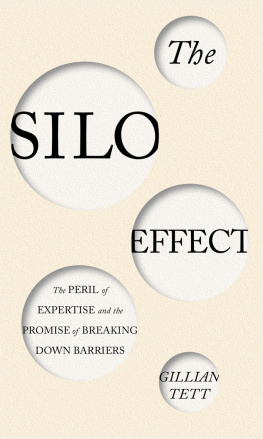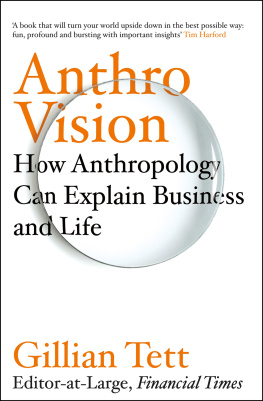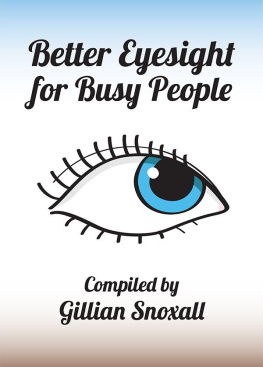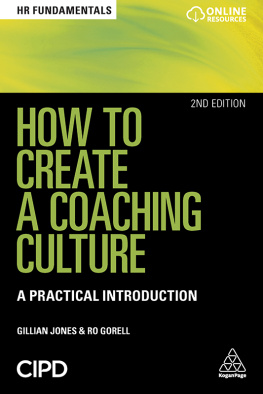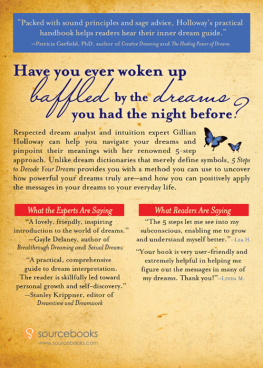Thank you for downloading this Simon & Schuster eBook.
Join our mailing list and get updates on new releases, deals, bonus content and other great books from Simon & Schuster.
C LICK H ERE T O S IGN U P
or visit us online to sign up at
eBookNews.SimonandSchuster.com
For Romaine Joy Carley Tett, in grateful, loving memory
Contents
Note from the Author
THIS BOOK STARTED DURING THE Great Financial Crisis of 2008. But it is not a book about finance. Far from it. Instead, it asks a basic question: Why do humans working in modern institutions collectively act in ways that sometimes seem stupid? Why do normally clever people fail to see risks and opportunities that are subsequently blindingly obvious? Why, as Daniel Kahneman, the psychologist, put it, are we sometimes so blind to our own blindness?
It was a question I often asked myself in 2007 and 2008. Back then, I was working as a journalist in London, running the markets team of the Financial Times . When the financial crisis erupted, we threw ourselves into trying to understand why the disaster had come about. There were lots of potential reasons. Before 2008 bankers had taken some crazy risks with mortgages and other financial assets, creating a gigantic bubble. Regulators had failed to spot the dangers, because they misunderstood how the modern financial system worked. Central bankers and other policymakers had given the wrong economic incentives to financiers. Consumers had been dangerously complacent, running up huge credit card debts and mortgage loans without asking whether they could be repaid. Ratings agencies misread risks. And so on.
But as I dug into the story of the Great Financial Crisis as a journalist (and later wrote a book about it, Fools Gold terms of how people organized themselves, interacted with each other, and imagined the world. In theory, pundits often like to say that globalization and the Internet are creating a seamless, interlinked world, where markets, economies, and people are connected more closely than ever before. In some senses, integration is under way. But as I dug into the 2008 crisis I also saw a world where different teams of financial traders at the big banks did not know what each other was doing, even inside the same (supposedly integrated) institution. I heard how government officials were hamstrung by the fact that the big regulatory agencies and central banks were crazily fragmented, not just in terms of their bureaucratic structures, but also their worldview. Politicians were no better. Nor were the credit rating agencies, or parts of the media. Indeed, almost everywhere I looked in the financial crisis it seemed that tunnel vision and tribalism had contributed to the disaster. People were trapped inside their little specialist departments, social groups, teams, or pockets of knowledge. Or, it might be said, inside their silos.
That was striking. But as the 2008 crisis slowly ebbed from view, I realized that this silo effectas I came to call itwas not just a problem at banks. On the contrary, it crops up in almost every corner of modern life. In 2010, I moved from London to New York, to run the American operations of the Financial Times , and when I looked at the corporate and government world from that perch, I saw a fragmented pattern there too. The silo syndrome cropped up at gigantic companies such as BP, Microsoft, and (later on) General Motors. It plagued the White House and Washington agencies. Large universities were often beset with tribalism. So were many media groups. The paradox of the modern age, I realized, is that we live in a world that is closely integrated in some ways, but fragmented in others. Shocks are increasingly contagious. But we continue to behave and think in tiny silos.
So this book sets out to answer two questions: Why do silos arise? And is there anything we can do to master our silos, before these silos master us? I tackle this partly from the perspective of someone who has spent two decades working as a financial journalist, observing global business, economics, and politics. That career has trained me to use stories to illustrate my ideas. So in this book you will hear eight different tales about the silo effect, ranging from Michael Bloombergs City Hall in New York to the Bank of England in London, Cleveland Clinic hospital in Ohio, UBS bank in Switzerland, Facebook in California, Sony in Tokyo, BlueMountain hedge fund in New York, and the Chicago police. Some of these narratives illustrate how foolishly people can behave when they are mastered by silos. Others, however, show how institutions and individuals can master their silos. Some of these are stories of failure. But there are also tales of success.
But there is a second strand to this book. Before I became a journalist (in 1993), I did a PhD in the field of cultural anthropology,
When I first became a financial journalist, I was often wary about revealing my peculiar past. The type of academic qualifications that usually command respect on Wall Street, or the City of London, are MBAs or advanced degrees in economics, finance, astrophysics, or another quantitative science. Knowing about the wedding customs of the Tajiks does not seem an obvious training to write about the global economy or banking system. But if there is one thing that the Great Financial Crisis showed it is that finance and economics are not just about numbers. Culture matters too. The way that people organize institutions, define social networks, and classify the world has a crucial impact on how the government, business, and economy function (or sometimes do not function, as in 2008). Studying these cultural aspects is thus important. And this is where anthropology can help. What anthropologists have to say is not just relevant for far-flung non-Western cultures, but can shed light on Western cultures. The methods I used to analyze Tajik weddings, in other words, can be helpful in making sense of Wall Street bankers or government bureaucrats. The lens of anthropology is also useful if you want to make sense of silos. After all, silos are cultural phenomena, which arise out of the systems we use to classify and organize the world. Telling stories about the silo effect as an anthropologist-cum-journalist can thus shed light on the problem. These tales may even offer some answers about how to deal with silos, not just for the bankers, but government bureaucrats, business leaders, politicians, philanthropists, academics, and journalists too.
Or that, at least, is my hope.
. In the United States this is known as cultural anthropology. In the U.K. it is known as social anthropology. Either way, cultural/social anthropology is about the study of how people live, think, and interact, not how they function in a biological sense. The study of human biology and evolution is normally called physical anthropology. These branches of anthropology often blur. But cultural anthropology does not usually place great emphasis on science.
Introduction
BLOOMBERGS SKUNKWORKS
We can be blind to the obvious, and we are also blind to our blindness.
Daniel Kahneman, Thinking, Fast and Slow
IN THE EARLY HOURS OF April 25, 2011, a brutal fire broke out in a poor neighborhood in the Bronx, New York. Nobody could rescue them.
In the days after their deaths, the press angrily hunted for scapegoats. Some pointed the finger at the New York government in City Hall. The building at 2321 Prospect Avenue had been illegally subdivided many times,
For a few days recriminations flared. Then they died down, as the medias attention moved to the next scandal. But a few miles away, inside the majestic City Hall building in downtown Manhattan, the tragedy sparked debate. When the news of the Garcia fire first broke, the mayor, Michael Bloomberg, asked some of his staff if there was anything that could be done to prevent this type of fire. At first glance, it seemed not. One of New Yorks dark secrets is that house fires have been tragically commonplace: in the decade before 2011, about 2,700 structural fires broke out each year, The odds were hopelessly stacked against anybody hunting for firetraps. Even when the inspectors looked at buildings that had attracted specific complaints, they only found unsafe conditions 13 percent of the time.
Next page
